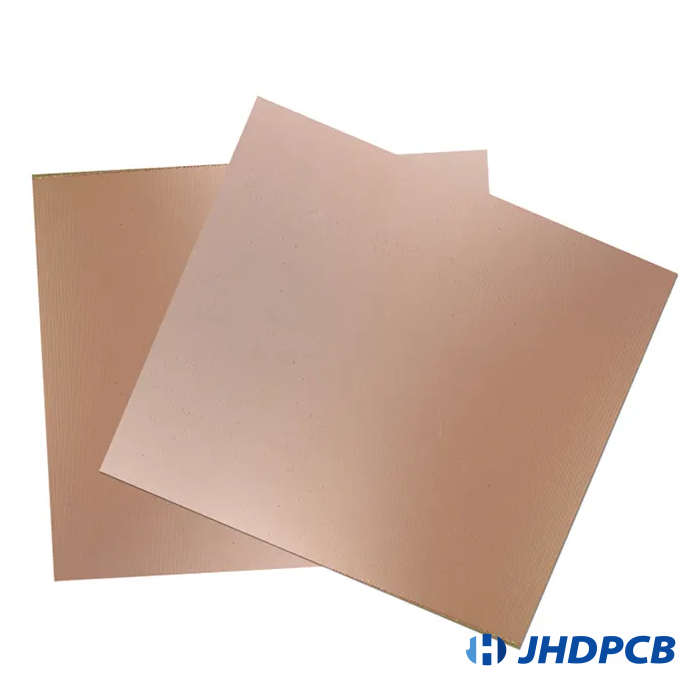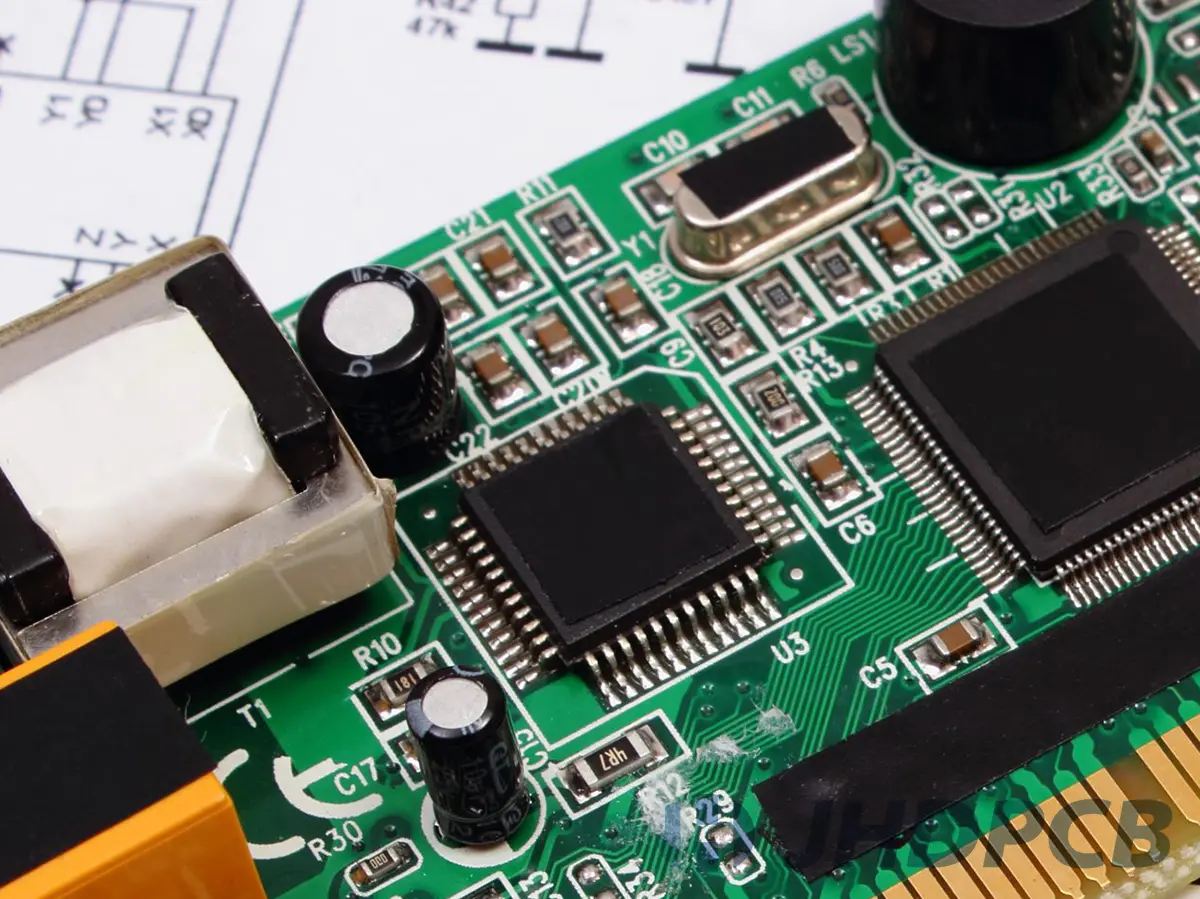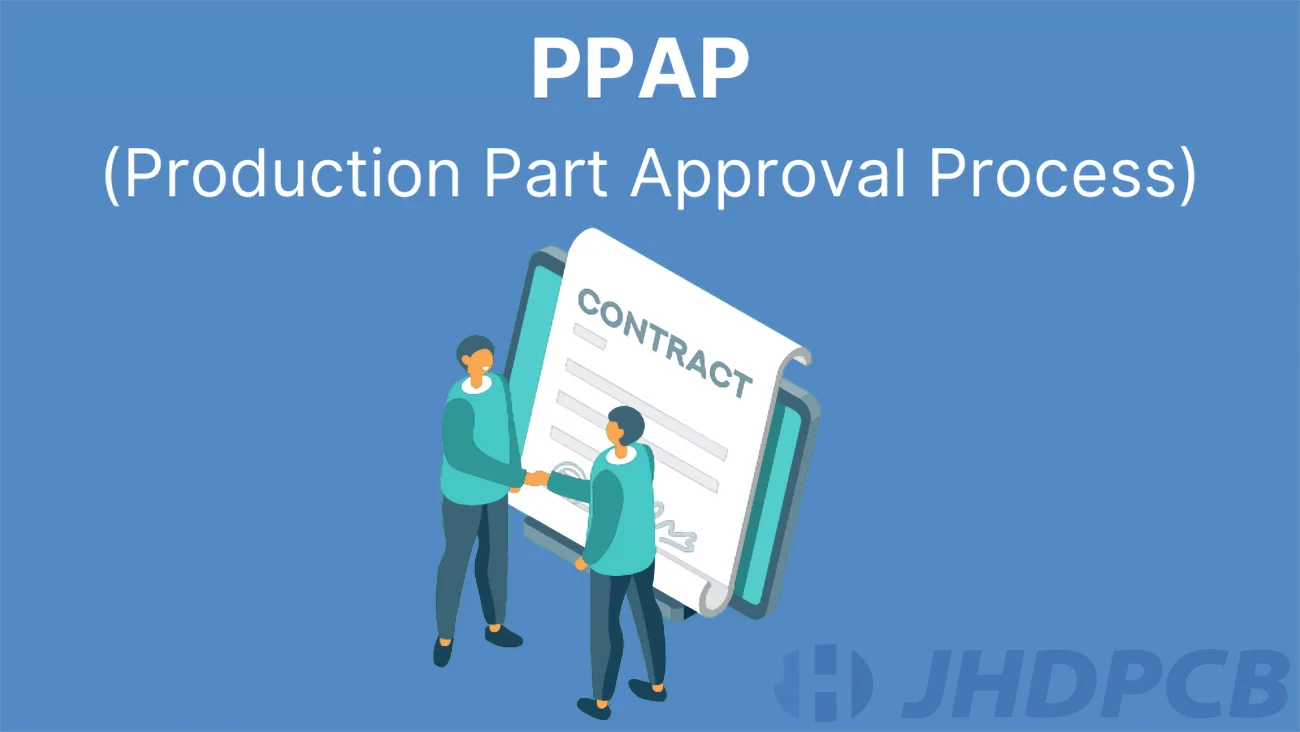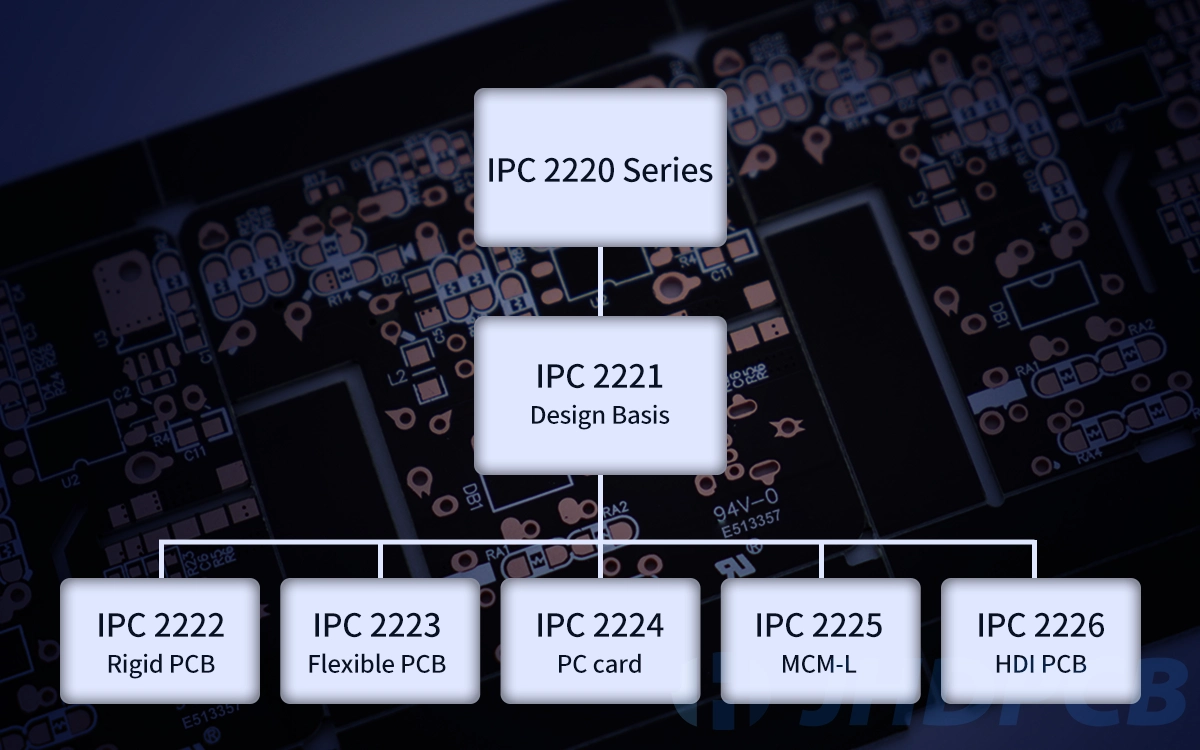Guide to 6 Common PCB CCL Material Types
jhdpcb@gmail.com
directory
The most common classification methods and quality judgment standards in PCB copper clad laminates are in the previous article “What is a copper clad laminate? And classification methods.“. The following JHD will list the differences between several common CCL materials in detail:
Metal base copper clad laminate:
The most common variety of metal-insulating resin-based copper clad laminates is high thermal conductivity aluminum-based copper clad laminates. Metal-based copper clad laminate is an important substrate material for metal-based heat dissipation substrate (PCB with high heat dissipation). The prepared metal-based heat-dissipating substrate is widely used in hybrid integrated circuits, automobiles, office automation, high-power electrical equipment, power Equipment, high-current equipment and other fields, have been more and more applications, especially in LED packaging products as a base substrate has been widely used. Among them, aluminum substrates and thick copper cores are particularly common.
Aluminum substrate is a metal-core copper clad laminate(metal CCL) with good heat dissipation function. Usually, a single panel consists of a three-layer structures, namely a circuit layer (copper foil), an insulating layer and a metal base layer. For high-end applications, it is also designed as a double-sided panel with a structure of circuit layer, insulating layer, aluminum base, insulating layer, and circuit layer. Few applications are multi-layer boards, which can be made by bonding ordinary multi-layer boards with insulating layers and an aluminum base. Due to its superior heat dissipation capability, it has been widely used in high power and LED products.
Product Composition:
Circuit layer:
The circuit layers (usually using electrolytic copper foil) are etched to form printed circuits, which are used to assemble and connect devices. Compared with traditional FR-4, the aluminum substrate can carry higher current with the same thickness and line width.
Comparison of current carrying capacity of the aluminum substrate and FR-4 copper foil.
Insulation:
The insulation layer is the main technology of aluminum plate, which mainly act one bonding, insulation and heat conduction. In the power module structure the insulation layer of aluminum plate is the largest thermal barrier. The better the thermal conductivity of the insulation layer, the more conducive it is to the diffusion of heat generated during the operation of the equipment, and the more conducive it is to reduce the operating temperature of the equipment, so resulting in increasing the power load of its module, reducing volume, prolonging service life and improving power output.
Metal base:
The metal selection of insulating metal substrate depends on the comprehensive consideration of thermal expansion coefficient, thermal conductivity, strength, hardness, weight, surface condition and cost of metal substrate.
Material properties:
- Flammability – UL-94V0;
- Flexural Strength – ~450Mpa Longitudinal / ~390Mpa Transverse;
- Coefficient of Thermal Expansion – Before Tg ~27ppm/℃ / After Tg ~30ppm/℃;
- Dielectric Breakdown – 6.0KV;
- Thermal conductivity – 1.0~3.0w/mk;
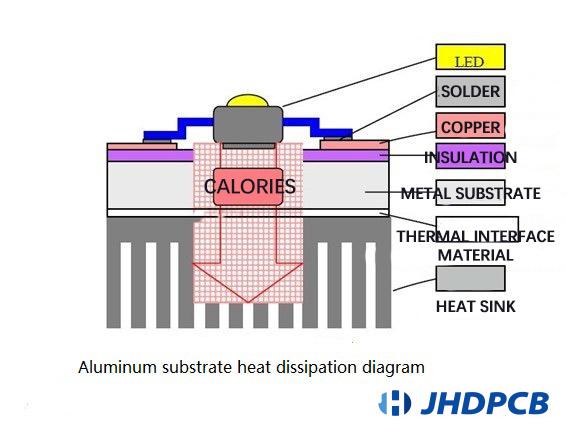
Epoxy Glass Fiber Cloth Substrate:
Epoxy glass fiber cloth base material is a base material with epoxy resin as adhesive and electronic glass fiber cloth as reinforcing material. Its mechanical properties, dimensional stability, impact resistance and moisture resistance are better than those of paper substrate. It has very good electrical performance, high working temperature and little affected by the environment. The adhesive layer of glass fiber cloth substrate and inner core thin copper clad laminate are important substrates for the production of multi-layer PCBs. According to processing technology, it has greater advantages over other resin glass fiber cloth substrates. This kind of products are mainly used for double-sided PCB, and the volume is very large.
Epoxy glass fiber cloth substrate, FR4 is the most widely using in PCB fabrication. In current years, high Tg FR-4 products have appeared with the developing of electronic product mounting technology and PCB technology. Arguably have been to be the most popular CCL in the world. The performance is unquestionable, and it is cheaper than some special materials. With such technology advances, it can now be developed to produce a many kinds of useful circuit boards, for example: halogen-free substrates.
FR-4 is the code of flame retardant material grade. It stand for the material specification which the resin material must be able to extinguish itself after combustion. It is the material grade but not the material name. So, there are variety of FR-4 materials used in general PCB, but most of them are composites made of Tera function epoxy resin, filler and glass fiber.
For detailed knowledge of FR4 materials in PCB manufacturing, please visit our relevant pages.
Technical Performance:
The technical performance of asphalt fiberglass board This semi-rigid board has many unique technical properties.
Thermal insulation: As we all know, glass fiber has low thermal conductivity, especially glass fiber with a thinner diameter. Because of its low bulk density, it can be widely used for heat preservation, heat insulation and cold insulation in construction and industrial sectors. Excellent thermal insulation material. The thermal conductivity of glass fiber is relatively small. After the glass fiber is hand-drawn into the asphalt glass fiber board, the irregular pores of the glass fiber in the asphalt glass fiber board are caused, which prevents air convection and weakens the effect of convection in heat conduction, which has a good effect. The insulation effect. Therefore, appropriately reducing the diameter of the glass fiber hand-drawn thick wire and reducing the bulk density of the asphalt glass fiber board can improve the heat insulation performance of the board.
Sound absorption: The glass fiber material has excellent sound absorption and sound insulation properties, and its sound absorption coefficient and frequency characteristics are closely related to the bulk density, thickness and diameter of the glass fiber. The general rule is: the sound absorption coefficient increases with the increase in the bulk density and thickness of the glass fiber board.
Hygroscopicity: The moisture absorption rate and water absorption rate of the asphalt glass fiber board are measured by the Shanghai FRP Structure Research Institute: After being stored in a humidity cabinet with a temperature of 50°C and a relative humidity of 93% for 24 hours, the moisture absorption rate is not measured. More than 0.5% (weight percentage), at room temperature, put the test plate in water for 24 hours and take it out. After dripping for one hour, the measured water absorption rate is not more than 15% (weight percentage).
Other technical performance: (1) Solid vibration isolation performance between two building foundations, use l. . Millimeter-thick pitch fiberglass board isolation. The isolation amount) 30 decibels. The amount of vibration is fired with a standard percussion device, and then with a 2209+1616 precision sound level meter. The measured value between two adjacent foundations.
(2) Compressive strength: under a static load of 0.2 kg/cm2, its relative compression is 15%.
Material Properties:
- Flammability – UL-94V0;
- Bending Strength – 500~600Mpa Longitudinal / 400~500Mpa Transverse;
- Coefficient of Thermal Expansion – Before Tg ~55ppm/℃ / After Tg ~285ppm/℃;
- Dielectric Constant @ 1MHz – ~4.7;
- Thermal conductivity – up to 0.8w/mk;
Composite Substrate:
The composite base copper clad laminate is between epoxy glass fiber cloth base and paper base copper clad laminate in terms of mechanical properties and manufacturing cost. It mainly refers to CEM-1 and CEM-3 composite CCL. It is a kind of glass fiber composite developed on the basis of FR-4.
The cotton pulp fiber paper or wood pulp fiber paper is used as the core substrate, and glass fiber cloth is used as the surface substrate. With glass fiber paper as the core material and glass fiber cloth as the surface substrate, both are impregnated with copper clad laminate made of flame retardant epoxy resin, which is called CEM-3, and usually with milk white.
These two types of CCL are the most common composite based CCL. CEM-3 is characterized by low mechanical durability, punching and mechanical drilling. Using CEM-1 and CEM-3 instead of FR-4 substrate to make double-sided PCB has high cost performance. It is also widely used all over the world.
Material Properties:
- Flammability – UL-94V0;
- Thermal conductivity – up to 0.8w/mk;
- Tg – ~130℃;
- Coefficient of Thermal Expansion – Before Tg ~55ppm/℃ / After Tg ~285ppm/℃;
- Bending Strength – 300~400Mpa Longitudinal / 200~300Mpa Transverse;
- Loss Tangent at 1MHz – 0.020;
- Dielectric constant@1MHz – 4.5~4.8;
Paper Substrate:
Common paper substrates in PCB copper clad laminates are divided into phenolic paper substrates and epoxy paper substrates.
Phenolic Paper Base – Insulation laminate with phenolic resin as binder and wood pulp fiber paper as reinforcement. Phenolic paper-based CCL can generally be punched, and has the advantages of cheap price, and low relative density. However, its operating temperature is lower and its moisture resistance and heat resistance are a few lower than epoxy fiberglass cloth substrates.
The paper base material is mainly refer to one-sided copper clad laminate. However, in recent years, there have also been double-sided copper clad laminates for silver paste vias. Its anti silver ion migration ability is higher than that of ordinary paper-based CCL. FR-1 (flame retardant) and XPC (non flame retardant) are the most commonly used product models of paper-based CCL.
Epoxy paper base material –paper-based CCL with epoxy resin as adhesive. Compared with FR-1, its electrical and mechanical properties are slightly improved. Its name is fr-3.
Polyimide (PI) Flexible Copper Clad Laminate:
PI is one of the high molecular organic polymers with the highest heat resistance. It is the main material for the manufacture of flexible printed boards because of its softness and efficiency. FCCL is an important substrate for flexible printed circuit boards (FPC), rigid-flex PCBs, and tape packaging substrates. It has the distinctive features of thin, light and flexible structure.It can also be used for dynamic bending, crimping and folding except for static bending. FCCL is also divided into three-layer flexible copper clad laminate with adhesive (3L-FCCL) and two-layer flexible copper clad laminate without adhesive (2L-FCCL). Compared with 3L-FCCL, 2L-FCCL has the characteristics of better temperature resistance, better dimensional stability, higher bond strength, thinner shape and better folding resistance.
Material Properties:
- Tensile Strength – ~72Mpa;
- Flammability – UL-94V0;
- Coefficient of Thermal Expansion – Before Tg ~55ppm/℃ / After Tg ~149ppm/℃;
- Tg – >250℃;
- Thermal conductivity – ~0.2w/mk;
- Dielectric Constant @ 1MHz – 4.2;
- Loss Tangent @ 1MHz – 0.018;
Special Resin Glass Fiber Cloth Substrate:
With the advancement of technology, various demands have also become diversified. Then the copper-clad laminate substrate has produced many special resin glass fiber cloth substrates under the main purpose of pursuing higher dielectric properties and high heat resistance. polyimide resin (PI), cyanate ester resin (CE), polytetrafluoroethylene resin (PTFE), bismaleimide triazine resin (BT), thermosetting polyphenylene ether resin (PPE) or PPO are all commonly used. Most resins exhibit high thermal resistance (high Tg), low water absorption, low dielectric constant and dielectric loss tangent in properties.
They are an excellent solution for special requirements or demanding microwave/RF products. But there are relatively high manufacturing costs.
Copper clad laminates of different materials have different material properties. This will directly affect the electrical, thermal and mechanical properties of the final laminated PCB. Therefore, before customizing PCB production, professional engineers will conduct multiple simulation tests to verify the design plan to ensure that the materials used meet the design expectations. When necessary, JHD will also cooperate with customers to provide free proofing services. So that customers can get high-quality PCBs that meet project needs.
Due to more than ten years of hard work and accumulation of experience, JHDPCB has been making contributions to the PCB industry with its own advantages and an attitude of continuous improvement. The one-stop PCB production line is ISO 9001, UL and RoHS certified, fully capable of providing high quality and eco-friendly PCB and PCB assembly services at competitive prices. If you need to know more about the PCB industry, please subscribe to contact our professional customers for consultation.
